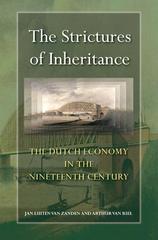Answered step by step
Verified Expert Solution
Question
1 Approved Answer
Please help with this question! 1. Income inequality and the poverty rate The following table summarizes the income distribution for the town of Perkopia, which
Please help with this question!
 1. Income inequality and the poverty rate The following table summarizes the income distribution for the town of Perkopia, which has a population of 10,000 people. Every individual within an income group earns the same income, and the total annual income in the economy is $500,000,000. Suppose that in 2007, the poverty line is set at an annual income of $43,775 for an individual. Share of Total Income in Perkopia (Percent) Year Lowest Quintile Second Quintile Middle Quintile Fourth Quintile Highest Quintile 2001 4.0 16.5 24.0 45.5 2007 3.8 9.6 15.2 22.9 48.5 2013 3.5 8.B 14.8 22.0 50.9 2019 3.0 7.9 14.0 21.9 53.7 The data in the table suggest that there was income inequality from 2001 to 2019. Complete the following table to help you determine the poverty rate in Perkopia in 2007. To do this, begin by determining the total income of awl individuals in each quintile using the fact that total annual income in the economy is $500,000,000. Next, determine the income of an individual in each quintile by dividing the total income of that quintile by the number of people in that quintile. (Hint: Recall that Perkopia has a population of 10,000 people.) Finally, determine whether the individual income for each quintile falls below the poverty line of $43,775. Share of Income in 2007 Total Income Individual Income Quintile (Percent) (Dollars) (Dollars) Below Poverty Line? Lowest 3.8 Second 9.6 Middle 15.2 Fourth 22.9 Highest 18.5 Using the information in this table, the poverty rate in Perkopia in 2007 is Suppose that the government introduces a welfare program in which any individual with an income of less than $43,775 per year receives a lump-sum transfer payment of $9,000 from the government. Assume that, in the short run, there is no change in labor-supply behavior among the people in Perkopia. In the year 2007, the poverty rate after the introduction of the welfare program in Perkopia is _ Again, suppose the government introduces a welfare program in which any individual with an income of less than $43,775 receives a lump-summ transfer payment of $9,000 from the government. Raphael, a resident of Perkopia who currently earns an income of $43,671, has the opportunity to work overtime and earn an additional $1,900 this year. Which of the following statements are correct? Check all that apply. O The $9,000 in aid presents a disincentive for Raphael to make more than $43,775 per year. O Raphael would gain more income by turning down the overtime than he would if he accepted the overtime. O Raphael may accept the overtime if he feels that taking it will increase the chances of his receiving a significant promotion
1. Income inequality and the poverty rate The following table summarizes the income distribution for the town of Perkopia, which has a population of 10,000 people. Every individual within an income group earns the same income, and the total annual income in the economy is $500,000,000. Suppose that in 2007, the poverty line is set at an annual income of $43,775 for an individual. Share of Total Income in Perkopia (Percent) Year Lowest Quintile Second Quintile Middle Quintile Fourth Quintile Highest Quintile 2001 4.0 16.5 24.0 45.5 2007 3.8 9.6 15.2 22.9 48.5 2013 3.5 8.B 14.8 22.0 50.9 2019 3.0 7.9 14.0 21.9 53.7 The data in the table suggest that there was income inequality from 2001 to 2019. Complete the following table to help you determine the poverty rate in Perkopia in 2007. To do this, begin by determining the total income of awl individuals in each quintile using the fact that total annual income in the economy is $500,000,000. Next, determine the income of an individual in each quintile by dividing the total income of that quintile by the number of people in that quintile. (Hint: Recall that Perkopia has a population of 10,000 people.) Finally, determine whether the individual income for each quintile falls below the poverty line of $43,775. Share of Income in 2007 Total Income Individual Income Quintile (Percent) (Dollars) (Dollars) Below Poverty Line? Lowest 3.8 Second 9.6 Middle 15.2 Fourth 22.9 Highest 18.5 Using the information in this table, the poverty rate in Perkopia in 2007 is Suppose that the government introduces a welfare program in which any individual with an income of less than $43,775 per year receives a lump-sum transfer payment of $9,000 from the government. Assume that, in the short run, there is no change in labor-supply behavior among the people in Perkopia. In the year 2007, the poverty rate after the introduction of the welfare program in Perkopia is _ Again, suppose the government introduces a welfare program in which any individual with an income of less than $43,775 receives a lump-summ transfer payment of $9,000 from the government. Raphael, a resident of Perkopia who currently earns an income of $43,671, has the opportunity to work overtime and earn an additional $1,900 this year. Which of the following statements are correct? Check all that apply. O The $9,000 in aid presents a disincentive for Raphael to make more than $43,775 per year. O Raphael would gain more income by turning down the overtime than he would if he accepted the overtime. O Raphael may accept the overtime if he feels that taking it will increase the chances of his receiving a significant promotion Step by Step Solution
There are 3 Steps involved in it
Step: 1

Get Instant Access to Expert-Tailored Solutions
See step-by-step solutions with expert insights and AI powered tools for academic success
Step: 2

Step: 3

Ace Your Homework with AI
Get the answers you need in no time with our AI-driven, step-by-step assistance
Get Started


